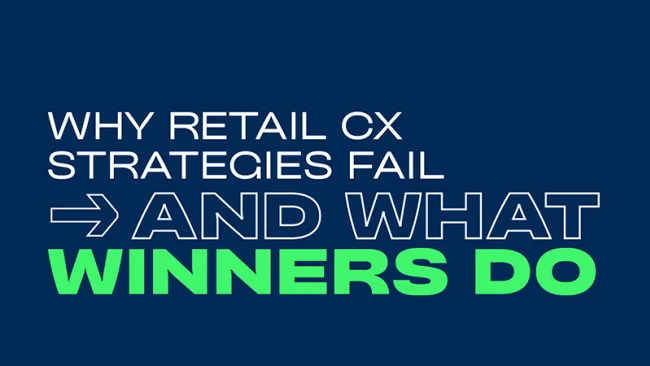Journey mapping is key to any retailer’s success. Knowing what shoppers go through – what frustrates them and what delights them as they interact with your brand – is key to delivering the type of frictionless customer experience (CX) that keeps shoppers coming back.
But one of the most valuable aspects of journey mapping is that it allows you to pinpoint and focus on the moments that matter, those key interactions that are most important to customers and have the biggest impact on whether they buy from you or not.
Once you’ve identified those moments that matter, you can strategically start working to improve them in a way that will deliver greater ROI and revenue for your company.
Here are some ways that focusing on the customer journey can help retailers increase revenue.
Zero in on key customer pain points
Many retailers already continually analyze data and use those insights to hone in on pain points and inform their CX efforts. But too often, they’re quick to merely collect pain points and tackle them in the order in which they find them. This is a mistake that can be a costly one.
When you move from pain point to pain point, as they arise in the journey, and attempt to fix them one after the other, you’re missing out on the holistic perspective needed to make a real difference. Don’t start with the pain points that crop up first in the customer journey – instead, focus first on the ones that will bring the greatest return in value to your brand once they’re eliminated.
To do this, you need to look at the entire customer experience: from the time someone decides they need or want to buy something to the moment when they make that purchase. Taking this more holistic view will make it easier to identify which parts of the process are causing roadblocks, and which ones hold potential for you to drive revenue or cut costs.
Maybe you’re making customers take too many unnecessary steps to complete a purchase, for instance. Perhaps adding more self-service options or weaving in more intelligent automation where it makes sense would make it easier for shoppers to buy from you. More than likely, adding the right mix of self-service and automation into your CX will improve your customer journey and reduce costs at the same time, helping your bottom line.
Stop thinking of pain points as a collection of separate data points and instead consider them within the broader context of your customers’ entire journey.
Leave no retail channel behind
Most retailers have multiple channels (brick-and-mortar stores, contact center, website, mobile site, and app), and a customer’s value grows exponentially if they interact in more than one channel. For these reasons, it’s key to understand the customer journey across all channels.
A customer who walks into a store will have a very different expectation than a shopper who interacts with your brand on an app; there are going to be different moments that matter and unique pain points associated with some of those moments. Ensure front-line employees get the data they need to improve the experience in real time. The more you build awareness of problems with those employees directly impacting the customer experience, the faster you can create a better experience.
When you take the time collect and understand insights across the entire customer journey in each channel, it will become clear which roadblocks need to be tackled first to start generating better ROI. And as you craft and continually improve your brand’s omnichannel CX, it’s important to track and measure how it’s going. Pay attention to whether your omnichannel customer base is growing, then dive into ways you can improve profitability by making those experiences more efficient for you and your customers.
Let CX drive your tech choices
When looking to elevate CX and improve the bottom line, it can be tempting to layer lots of technology into the mix. Afterall, intelligent automation, workforce optimization, process automation, and various back-office improvements can save your brand a lot of time and money – while improving experiences for customers.
But even the best technology won’t improve a broken experience if you don’t have a firm grasp of the root cause. Only once you truly understand why an experience is frustrating customers and what can be done to solve it, can you start looking at tech options to help.
Let your customer journey and strategy drive the tech choices you make, not the other way around.
If you’ve got the right tools and people in place to minimize pain points and maximize customer experience, you’ll be able to harness and grow the power of those moments that matter. And if you’re unsure where to start, working with an experienced partner can help.
With the right mix of strategy, people, and tech you can improve your customer journey in ways that make your brand more efficient and grow your revenue.
















